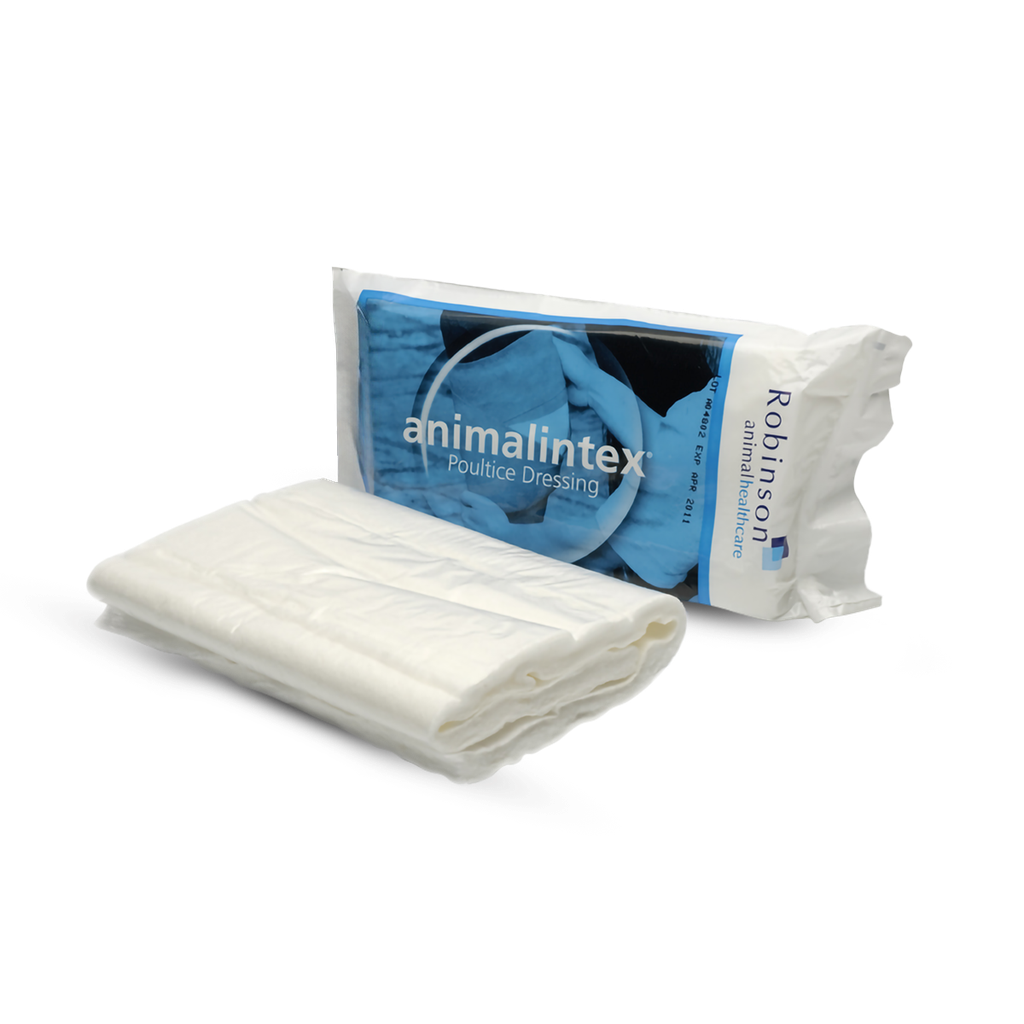The all-purpose veterinary poultice and wound dressing. For use on horses and dogs (not sterile).
FOR EXTERNAL USE ONLY. COMPOSITION INGREDIENTS - TRAGACANTH 6.02g BORIC ACID 2.08g. KEEP OUT OF REACH OF CHILDREN. Boric Acid Antiseptic
- Minimises infection and reinfection
- Promotes faster healing
Low adherent wound facing
- Easy to apply and remove
- Dressings can be changed with minimum disruption to the wound
Medicated cotton wool
- Absorbs pus and holds infected secretions away from the body
- Cleaner wound environment
Cushioned protective layer
- Provides support and protection
- Safeguards against re-injury
Polythene backing cover
- Keeps out external contamination and keeps in moisture and warmth
- Faster healing
Economical to use
- Can be cut to size so there is no waste
- Cost effective
The instructions supplied with the product should be followed carefully as these too are regulated by license. Animalintex can be applied as a hot wet poultice, a cold wet poultice or even as a dry wound dressing – particularly in a first aid situation. The technique used depends on the particular condition to be treated. Hot wet poulticing is used for abscesses, corns, cracked heels, infected wounds, laminitis, mud fever, punctured foot, seedy toe, thorns and thrush. Cold wet poulticing is used for bruising, capped elbow, capped hock, sore shins, sprains, strains and splints.
To prepare a poultice, boil water and allow it to cool to 38 degrees centigrade (so that it does not burn the horse) immerse the poultice and squeeze out excess water. Note that if infected pus is present, the poultice needs to be damp (not wet) so that the pus is absorbed into the poultice. If a cold wet poultice is to be used, follow the same procedure as above but simply allow the boiled water to cool before application. The poultice is applied to the horse after cleansing and drying the affected area and then secured with a bandage or poultice boot. The poultice should be changed at least every 12 hours. The progress of the ailment can be checked at the same time. If the horse does not respond to treatment or is showing signs of distress, call your vet. CHANGE ANIMALINTEX AT LEAST ONCE EVERY 12 HOURS. Do not overlap the Animalintex as this will cause pressure points. Do not bandage too tightly. Do not apply to hot, i.e. tested on the back of the hand, it should feel comfortable. If the skin is broken, tetanus cover is required. For external use on horses and dogs only. The over-use of hot wet dressings on a wound or abscess may encourage the development of excessive granulation tissue (proud flesh). The over-use of hot wet dressings on a wound or abscess may encourage the development of excessive granulation tissue (proud flesh). All medicines should be kept out of the reach of children. Store in a dry place. If adhesive dressings are used on animals they should be discontinued if a skin reaction occurs.

To install this Web App in your iPhone/iPad press
![]() and then Add to Home Screen.
and then Add to Home Screen.

